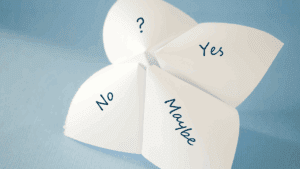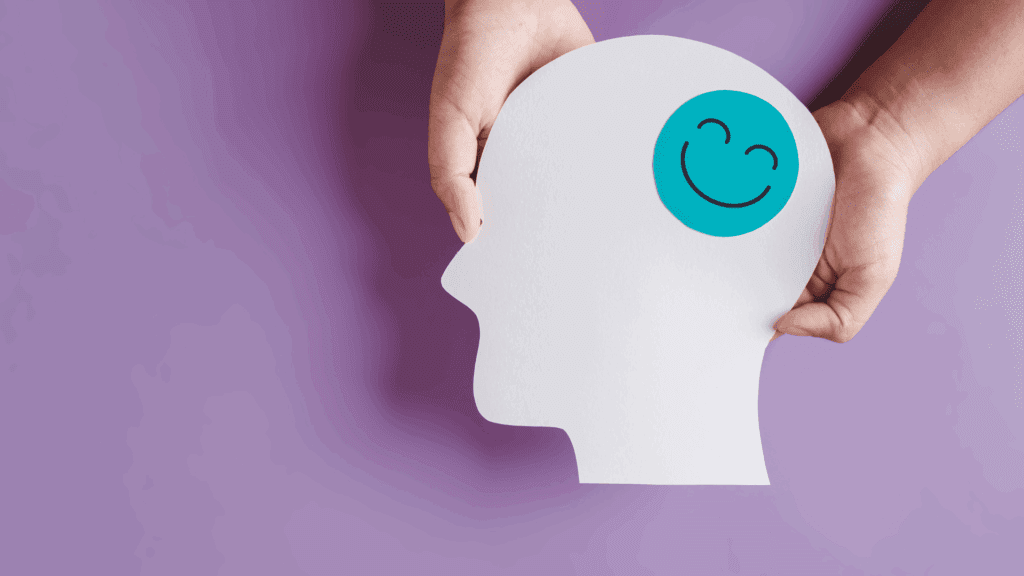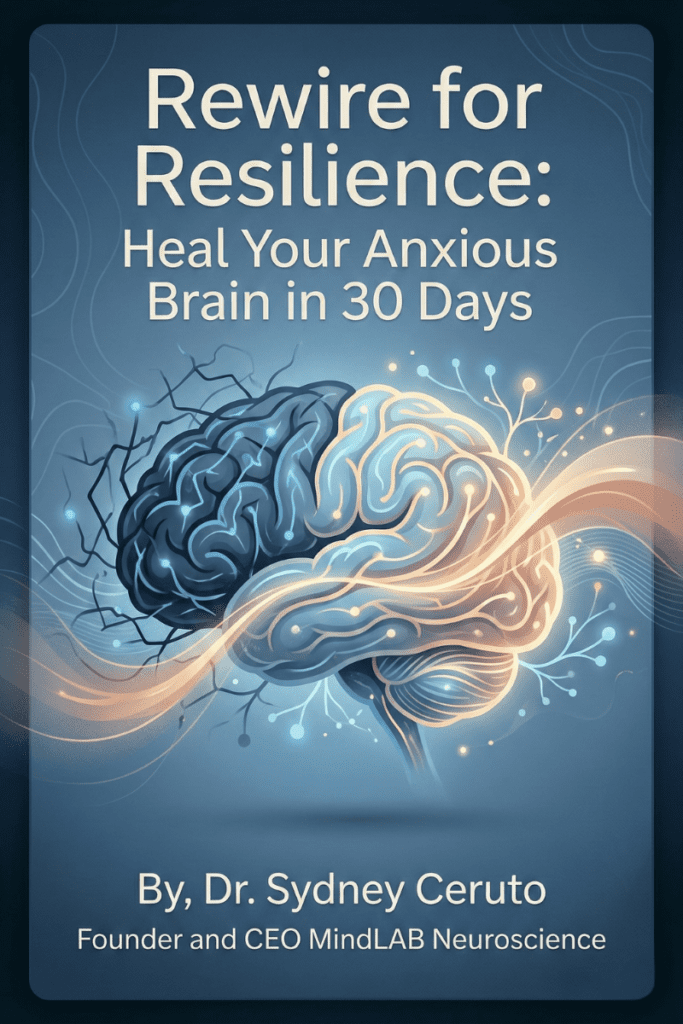I wrote this article to illuminate a truth I observe every week in my coaching practice: the Dopamine Paradox causes high performers to chase relentlessly and enjoy sparingly. The same chemistry that fuels ambition also biases the brain toward anticipation over appreciation. When you understand how that bias works, you stop being pulled by restless craving and start designing a life that blends drive with genuine satisfaction. In other words, you learn to make the Dopamine Paradox serve you, not sabotage you.
In this article, I walk you through the dopamine paradox unravelling the neurobiology of why the brain craves anticipation far more than it enjoys arrival, and how understanding this can change the way you pursue goals and satisfaction.”
Anticipation’s High, Satisfaction’s Whisper
Dopamine is the engine of pursuit. It surges when I imagine, predict, and move toward a potential reward. It does not guarantee that I will like what I get. Liking—the quiet, embodied sense of “this feels good”—relies far more on systems that don’t shout. That’s why the thrill of the chase so often eclipses the pleasure of arrival. This is the Dopamine Paradox in everyday clothing: you plan, strive, hit the target, and within hours your mind is already scanning for the next hill to take.
As a neuropsychologist, I watch this play out across careers, relationships, and personal goals. The brain’s reward circuitry fires most intensely during uncertainty and anticipation, and then it settles—sometimes abruptly—once the outcome lands. If the result meets expectations, the signal quiets. If the result exceeds expectations, it spikes briefly. If it disappoints, it dips quickly and pushes you to redirect your pursuit. The Dopamine Paradox is efficient for survival but treacherous for modern fulfillment.
A Brain Built to Move, Not Linger
From an evolutionary perspective, it makes sense. My ancestors couldn’t bask in satisfaction for long; lingering after a good hunt was a risky proposition. The wanting system had to reignite quickly to secure the next meal and maintain safety. The Dopamine Paradox is the legacy of that design. In a modern context, the same circuitry makes me refresh inboxes, chase metrics, and crave recognition as if my life depended on it. It doesn’t. Yet the biology insists it might.
Recognizing that pattern is liberating. It reframes “what’s wrong with me?” into “what’s going on in my brain?” Instead of pathologizing drive, I can use it wisely. Instead of blaming myself for muted joy, I can build structures that amplify liking once I arrive.
The Hedonic Treadmill, Revisited
The hedonic treadmill is a cultural expression of the Dopamine Paradox. Wanting outrun’s liking, so I adapt to new possessions, titles, and accolades with startling speed. The solution is not to mute ambition. The solution is to pair pursuit with practices that deliberately convert arrival into felt enjoyment. When I ritualize savoring, I lengthen the time my nervous system spends in liking rather than whipping myself back into craving.
Case Study: Viviana, Achievement Without Satisfaction
Viviana came to me with a résumé that most would envy: promotions, industry awards, leadership over high-visibility initiatives. Yet she described her inner life as numb. “I hit the goal, and it evaporates,” she said. “I don’t feel it.” This is the Dopamine Paradox at scale—relentless wanting, fragile liking.
I assessed her reward patterns and mapped them against her daily rhythms. Her spikes were clustered around anticipation: pitching new ideas, preparing for big meetings, watching metrics climb. The moments that should have delivered satisfaction—project completion, team wins, public recognition—registered only briefly before her mind shifted to the next chase. She lived inside the Dopamine Paradox without language for it.
We rebuilt her architecture. First, I installed “pleasure pauses” on her calendar after major checkpoints: five to fifteen minutes of deliberate slowing to label sensations, mark meaning, and share the win with someone who mattered. Second, I had her introduce micro-rituals that tied effort to enjoyment: a short walk outdoors after shipping a deliverable; a favorite meal with her partner after wrapping a milestone; a quiet five-minute journal that captured what the win meant to her identity rather than her image. Third, we aligned goals with values so the brain recognized not only the outcome but also the congruence. The Dopamine Paradox loses power when the nervous system encodes wins as personally meaningful rather than merely publicly impressive.
Within six weeks, Viviana reported a striking shift: fewer empty highs, more grounded satisfaction, and a calmer pace that paradoxically increased her output. The Dopamine Paradox didn’t disappear; it became navigable. She learned to harness wanting while cultivating liking.
The Thrill of “Maybe” and Why It Hooks You
Variable reinforcement—“maybe this time”—maximizes dopamine release. It is the reason gambling captivates, notifications hijack attention, and intermittent praise at work can feel addictive. The Dopamine Paradox is amplified by uncertainty because the brain treats unpredictability as a high-value signal. To work with it, I maintain uncertainty where it benefits—creativity, exploration, innovation—and mitigate it where it hinders—role ambiguity, unclear priorities, unstable boundaries. In my clients, the most significant gains often come from shrinking unwanted uncertainty.

Gender, Hormones, and Motivation Cycles
Drive is not monolithic. Hormonal milieus influence how dopamine sensitivity fluctuates over time. Many men feel steady initiative linked to testosterone’s influence on reward salience. In contrast, many women experience cyclical variations in motivation and social reward sensitivity across the month and across life stages. The lesson I draw from coaching is simple: learn your pattern, respect your tempo, and schedule high-leverage pursuits when your motivational chemistry is in favor of them. The dopamine paradox remains in play, but timing becomes an ally rather than a mystery.
Cultural Scripts and the Social Brain
Culture teaches the brain what to want. Status, autonomy, belonging, legacy—each society amplifies specific signals and dulls others. I ask clients to audit their “borrowed” goals. Are you chasing a promotion because it aligns with your values—or because your industry worships ladders? Are you optimizing for public likes or private meaning? The Dopamine Paradox is merciless when your goals are inherent; you’ll work hard and like it little. When your goals are chosen, wanting still surges, but liking finally has a place to land.
Reward Prediction Error in Real Life
The Dopamine Paradox runs on prediction. If the outcome beats your expectation, you get a burst. If it merely meets expectations, you normalize quickly. If it falls short, you feel a sharp drop and a reflex to redirect. I coach clients to manage expectations intentionally, not to dampen ambition, but to right-size the brain’s forecast. Underpromise to yourself on timelines; overdefine what “good” means; and plan for positive surprises you can control. You’ll still feel the chase, but you’ll also feel the win.
What Wanting Sounds Like in Your Head
I coach people to recognize the voice of wanting. It is future-focused, impatient, and contingency-driven. It speaks in if-then statements: if I ship this today, then I can rest; if I get this title, then I’ll feel secure. Liking speaks more quietly and presently: this feels satisfying; I’m proud of this moment; I want to stay here a little longer. The Dopamine Paradox teaches you to honor both voices—use wishing to start, and use liking to finish.
Designing for Liking Without Losing Drive

I don’t ask clients to give up their edge. I ask them to install architecture that turns achievement into absorption. Here is the framework I use to make the Dopamine Paradox work in your favor:
Name the Win
Label explicitly what was accomplished and why it matters. The brain encodes what you name. A named win becomes a memory trace your nervous system can revisit, extending liking beyond a moment.
Share the Signal
Social acknowledgment deepens satisfaction. Share the outcome with a trusted person or team and ask them to reflect on what they see. The social brain translates private effort into communal meaning, easing the fade of the Dopamine Paradox.
Mark the Moment
Create a brief ritual: music, a walk, a favorite tea, or a stretching sequence. Repetition links completion with embodied pleasure. With practice, your body anticipates liking, not just wanting.
Close the Loop
Write two or three sentences about what you learned, who you became, and what you will not carry forward. Closure prevents the brain from leaving loose threads that keep craving alive.
Delay the Next Sprint
Even a short delay—ten to fifteen minutes—between finishing and starting the subsequent pursuit rewires pacing. The gap trains your system that it is safe to savor before you chase again.
The Wanting–Liking Map: A Two-Week Practice
I ask clients to track two columns each day for two weeks. Column one: top three things I want. Column two: how much I actually like the outcomes I achieved yesterday. Most people discover clear classes of desires: some consistently produce high liking (finishing a complex task, quality time with a partner, physical movement), while others reliably disappoint (doom-scrolling, impulse purchases, vanity metrics). Once you see the pattern, you can invest energy where wanting and liking converge and prune the rest. That is how you shrink the Dopamine Paradox’s grip day by day.
Performance Without the Crash: Executive Function and Energy
When wanting dominates, procrastination and sprinting replace rhythm and stewardship. I rebuild executive function by sequencing tasks to match cognitive energy: deep work when attention peaks, admin when it dips, restoration before depletion. I help clients internalize a simple rule: protect the asset. If you burn the system to earn the reward, you will magnify the Dopamine Paradox—your brain will insist on chasing again because arrival never feels safe or satisfying.
Relationships Through the Lens of Reward
In relationships, the dopamine paradox manifests as a tendency towards novelty-seeking over nurturance. Many partners chase the spark and undervalue the steady warmth of a secure connection. I teach couples to convert small moments into reliable rewards: daily acknowledgments, micro-celebrations, and intentional reunions at the end of the workday. When ambition is cultivated at home, it becomes less frantic and more focused outside the house.
Creativity, Curiosity, and the Productive Use of Craving
I never demonize wanting. Curiosity and exploration rely on it. The key is to channel cravings toward domains that tolerate uncertainty and reward persistence, such as creative work, learning, and entrepreneurship. I advise clients to separate discovery sprints (open-ended, high novelty) from delivery sprints (structured, outcome-focused). This rhythm respects the Dopamine Paradox: use uncertainty to generate energy; use structure to harvest satisfaction.
Stress, Burnout, and the Biology of “Never Enough”
Chronic stress narrows attention and intensifies future focus. In that state, liking becomes almost inaccessible. I have clients run short regulation protocols before significant transitions—three slow breaths, one minute of visual horizon scanning, five gentle neck rotations. These micro-interventions send a safety signal that reopens access to the present. Without somatic safety, the Dopamine Paradox becomes a treadmill you cannot step off.
Boundaries that Protect Liking
I treat boundaries as reward hygiene. Clear stop times, phone-free windows, weekly white space, and device curfews are not lifestyle flourishes; they are neurochemical investments. Each boundary preserves the conditions for liking to arise and be noticed. Without them, wanting will colonize every open minute.
Values as the Antidote to Empty Wins
The fastest way to convert wanting into liking is alignment. When your goal aligns with your values—such as service, mastery, beauty, or growth—the brain registers deeper satisfaction. I ask clients to define three value filters and run significant commitments through them. If a goal fails two of the three filters, it typically produces a sharp Dopamine Paradox: huge push to start, almost no joy at the finish.
Language That Rewires Motivation
Words shape reward salience. I nudge clients to replace outcome-only language with identity-linked language. Not “I need to win this contract,” but “I deliver excellence and build trust.” The former inflates the chase; the latter deepens the experience of becoming. Over time, the Dopamine Paradox softens because your brain derives liking from who you are while pursuing, not only from what you obtain.
A Practical Week of Wanting and Liking

Here is a simple schedule I give high performers who are ready to operationalize the Dopamine Paradox:
Monday: Identify one needle-moving task and one micro-ritual you will use to mark completion. Schedule both.
Tuesday: Add a five-minute savor block after your top task. Write three sensory details about the moment of finishing.
Wednesday: Share one win with a peer or partner and reflect their acknowledgment in writing.
Thursday: Prune one pursuit you know generates high wanting and low liking. Reallocate that time to a value-aligned activity.
Friday: Review the week’s wins and explicitly name their meaning. Delay the next sprint for fifteen minutes.
Weekend: Choose one intrinsically rewarding activity (learning, movement, nature, art): no metrics, no photos—just presence.
Repeat for four weeks. You will still feel the Dopamine Paradox—it is part of being human—but you will stop being ruled by it.
When High Achievement Masks Fear
Many clients insist that more output will finally deliver peace. The Dopamine Paradox feeds that illusion because the chemistry of anticipation feels like certainty. I respect drive, and I challenge the belief beneath it: that safety lives only in the future. It never does. Safety and satisfaction are either present or absent altogether. When I teach the nervous system to tolerate stillness after a win, the entire architecture of motivation changes.
What Changes When You Master the Dopamine Paradox
You don’t become less ambitious; you become more precise. You don’t lose your edge; you lose your compulsion. You don’t stop wanting; you stop mistaking wanting for happiness. In my practice, that shift looks like higher-quality work, steadier relationships, and a calmer baseline that sustains long-term success. The Dopamine Paradox remains, but it stops running your life.
Your Two Commitments Going Forward
First, I will honor my drive by pointing it at what matters. Second, I will celebrate my humanity by bringing enjoyment wherever I go. Keep those promises, and the Dopamine Paradox becomes a partner: wanting pulls you forward; liking holds you steady when you get there.
#DopamineParadox #Neuroscience #Motivation #Performance #Leadership #Productivity #Burnout #Fulfillment #Neuroplasticity





